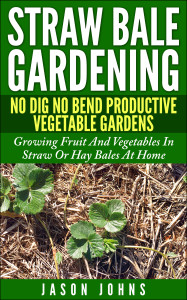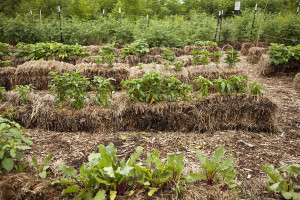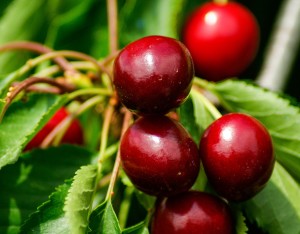 “Straw Bale Gardening – No Dig No Bend Productive Vegetable Gardens” is for anyone who wants to learn more about this unusual and interesting way of growing fruits, vegetables and flowers.
“Straw Bale Gardening – No Dig No Bend Productive Vegetable Gardens” is for anyone who wants to learn more about this unusual and interesting way of growing fruits, vegetables and flowers.
However, when you start looking into the subject it can be a little confusing to the newcomer to the field. I wrote this book to clear up this confusion and to provide you with a simple to follow, step-by-step guide to growing delicious fruits and vegetables in bales of straw!
Sounds crazy doesn’t it, yet it is an incredibly easy and productive way of growing vegetables! When you read this book you will get practical methods and tips on how to set up your own straw bale garden and grow plants in them. You’ll be amazed by just how little work is involved once you have set the bales up.
When you read “Straw Bale Gardening – No Dig No Bend Productive Vegetable Gardens” you will discover:
– Why Grow In Straw Bales – discover the many benefits of straw bale gardening and why it is becoming so very popular with gardeners.
– Setting Up Your Straw Bale Garden – learn how to set up your own straw bale garden at home, it’s easier than you may think!
 – Planting Out Your Bales – how to plant out your bales properly so your plants thrive.
– Planting Out Your Bales – how to plant out your bales properly so your plants thrive.
– Supporting Your Plants – the best methods for supporting your plants whilst they grow for maximum productivity.
– Watering Your Straw Bales – a vital step, and learn how to set up your straw bale garden so you don’t have to lift a finger to water it!
– Maintaining Your Straw Bale Garden – tips and advice on the best way to maintain your garden, not that there is a lot to do anyway, but you will find out what needs doing and how to do it.
– Growing Tomatoes In Straw Bales – the most popular vegetable to grow at home and you will learn exactly how to grow them in straw bales.
– The Best Vegetables To Grow In Straw Bales – the different vegetables to grow in bales and the few that just don’t work in this type of gardening.
– Different Straw Bale Garden Layouts – some of the possible layouts you can use and tips on how to ensure the layout benefits your plants.
– What To Do With Leftover Bales – find out exactly how useful the spent bales are and what to do with them.
– Building A Straw Bale Frame – ideas for making your straw bale garden more aesthetically pleasing.
– Tips And Tricks For Growing Successfully – some advice and tips for success in straw bales.
Straw bale gardening is a great way to garden that requires a minimal amount of work and is very easy to maintain. There are a lot of benefits to you from growing in straw bales and it will be much easier on your back and your plants will thrive.
Enjoy your adventure in to straw bale gardening as “Straw Bale Gardening – No Dig No Bend Productive Vegetable Gardens” explains all about this exciting way of gardening. Discover today how straw bale gardening can benefit you!
Preview the book by clicking on the image below:
























